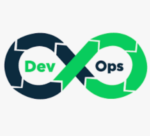Stop by the Perforce booth to learn about our new partnership with Siemens and get a demo of the latest enhancements in Perforce IPLM, P4, and VersIC. We’re eager to hear about your current challenges and how our semiconductor design and data management solutions can ease your design and development hurdles. Plus, you can try your… Read More
Tag: perforce
The Git Dilemma: Is Version Control Enough for Semiconductor Success?
Git is a version control system that saves every change made to files. It offers powerful tools for managing these changes. This makes Git ideal for software development, as it lets you keep all project files in one place.
Software has grown in complexity, necessitating more collaboration among engineers across various time zones.… Read More
LIVE WEBINAR: Automating the Integration Workflow with IP Centric Design
Subsystem and full-chip integration plays a crucial role in any project – particularly for large SoCs. Our upcoming webinar on April 30 confronts the typical challenges of this process and provides a detailed view into how IP centric design can help you solve them. Join us to learn how transforming your design flow can help your… Read More
2024 Outlook with Adam Olson of Perforce
Perforce is a company that provides software solutions primarily focused on version control, especially for large-scale development projects. Version control systems manage changes to documents, computer programs, large web sites, or other collections of information. Perforce’s main product is Helix Core, formerly… Read More
The Transformation Model for IP-Centric Design
Semiconductor designs have been progressing over time to address wider product varieties and designs with increasing complexity. Organizations have been addressing intense time-to-market pressures by leveraging globally dispersed team resources. The project-centric design methodology, which once worked well with … Read More
Chiplets and IP and the Trust Problem
Perforce recently hosted a webinar on “IP Lifecycle Management for Chiplet-Based SoCs”, presented by Simon Butler, the GM for the Methodics IPLM BU. The central theme was trust, for IPs as much as chiplets. How can an IP/chiplet consumer trust that what they receive has not been compromised somewhere in the value chain from initial… Read More
Insights into DevOps Trends in Hardware Design
Periodically I like to check in on the unsung heroes behind the attention-grabbing world of design. I’m speaking of the people responsible for the development and deployment infrastructure on which we all depend – version control, testing, build, release – collectively known these days as DevOps (development operations). … Read More
IP Lifecycle Management for Chiplet-Based SoCs
Chiplet-based System-on-Chips (SoCs) are becoming increasingly popular in the semiconductor industry due to their potential to improve design efficiency, increase performance, and reduce costs. While chiplets are seen as a way to reduce the cost of innovation, they introduce a lot of challenges too. Packaging, interconnect… Read More
Podcast EP132: The Growing Footprint of Methodics IPLM with Simon Butler
Dan is joined by Simon Butler, the founder and CEO of Methodics Inc, Methodics was acquired by Perforce in 2020, and he is currently the general manager of the Methodics business unit at Perforce. Methodics created IPLM as a new business segment in the enterprise software space to service the needs of IP and component based design.… Read More
The CHIPS and Science Act, Cybersecurity, and Semiconductor Manufacturing
This year is proving to be a momentous one for U.S. semiconductor manufacturing. During a global chip shortage and record inflation, President Biden signed into effect the CHIPS and Science Act – which so far is the greatest boon to U.S. semiconductor manufacturing in history, with $52 billion in subsidies for chip manufacturers… Read More







